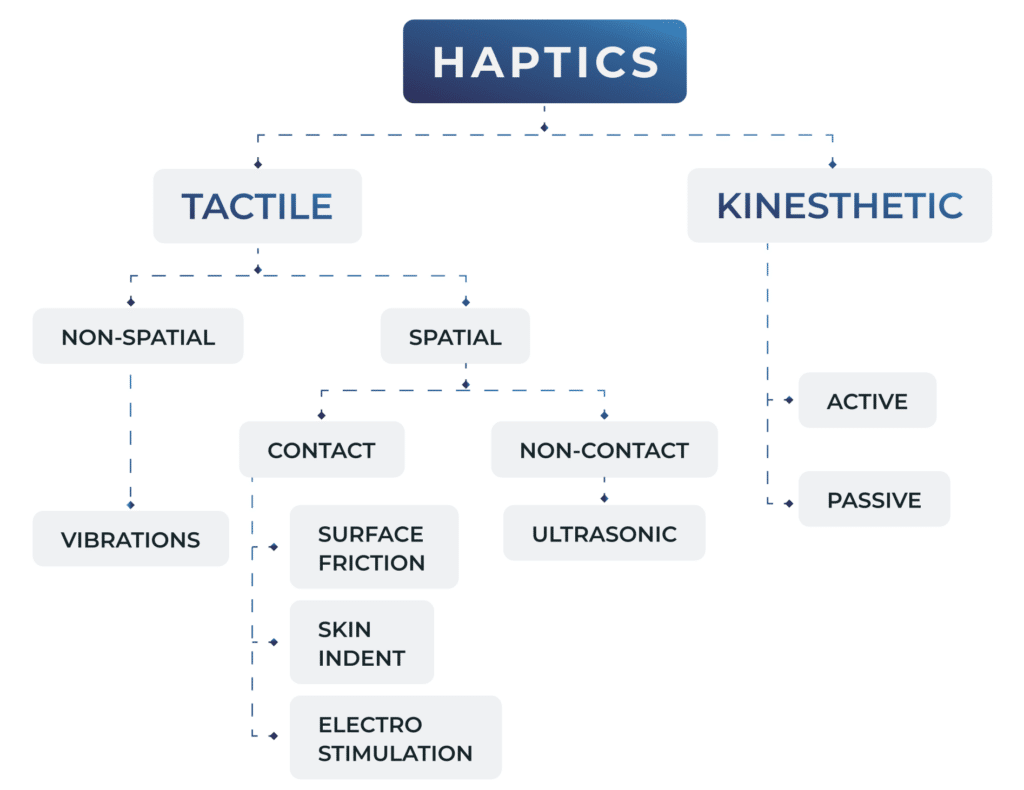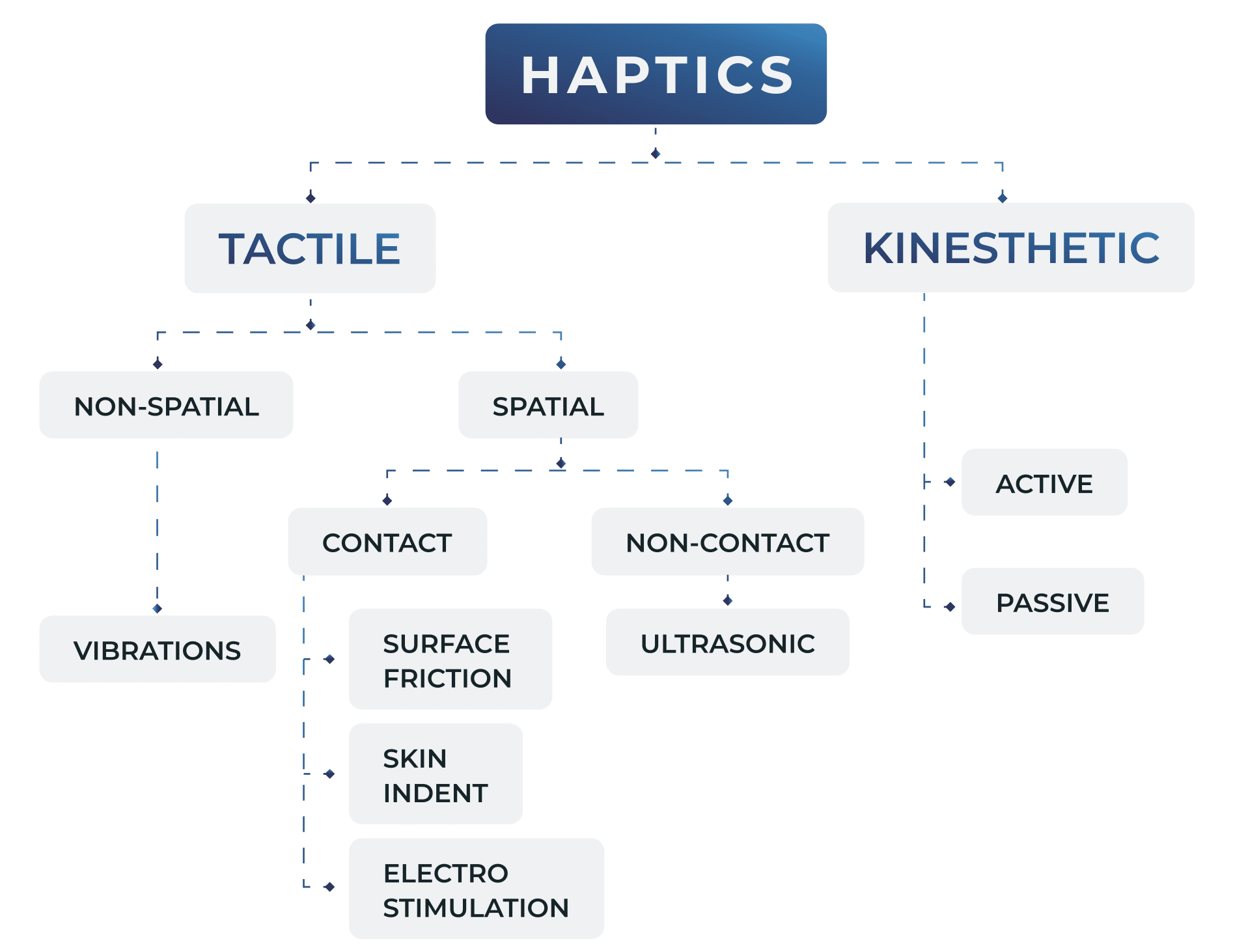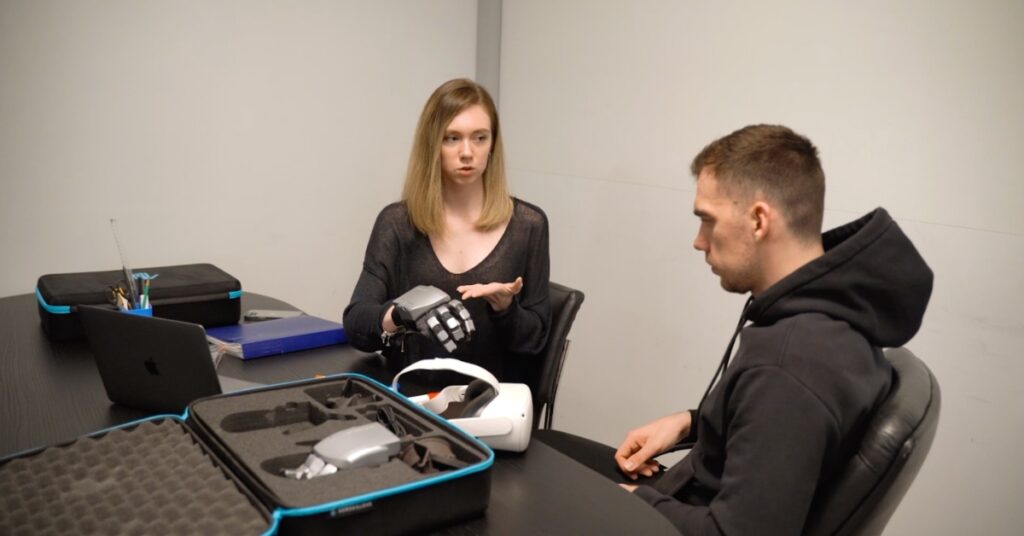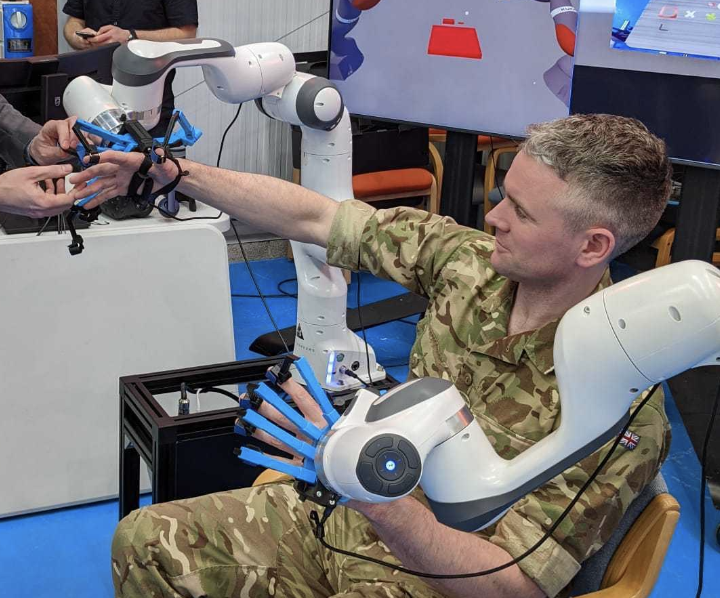The Different Types of Haptic Feedback
Haptic feedback is a tactile feedback technology that communicates through the sense of touch. It is designed to provide physical sensations to the user, which can be perceived as vibrations, pressure, or other tactile sensations. Haptic feedback is used in a wide range of applications, from mobile devices to gaming controllers, medical devices, and more.
There are several types of haptic feedback, each with its unique features and applications. In this blog, we will discuss the most common types of haptic feedback and their respective use cases.
Kinesthetic Feedback
Kinesthetic feedback enables the user to perceive the size and density of an object through physical sensation. There are two types of kinesthetic feedback: passive and active. Passive kinesthetic feedback only impedes the user’s movement, while active kinesthetic feedback can also move the user. This feedback is particularly useful when interacting with objects, but it can also enhance shape perception. Passive kinesthetic feedback is relatively low-cost and simple to program, in contrast to active kinesthetic feedback.
Tactile Feedback
Tactile feedback can be divided into Spatial and Non-Spatial Feedback.
There are various types of technologies and perceptions of touch when it comes to tactile feedback. One type is non-spatial tactile feedback, which provides a sense of textures and cues through vibration patterns. This type of feedback is well-researched and relatively inexpensive.
On the other hand, spatial tactile feedback offers more detailed information about edges and shapes. There are two types of technologies involved in this – contact spatial haptics and electric stimulation. The former utilises mechanical technologies like friction surfaces and skin indentation/deformation, while the latter stimulates nerve endings to trick the user’s brain into feeling contact. However, contact spatial haptics is currently in a very early stage of development and is primarily used for impact and pain interactions. Moreover, skin indentation and surface frictions are quite expensive technologies.
Vibrotactile feedback is one of the most common types of haptic feedback. It involves the use of a small motor to create vibrations that can be felt by the user. Vibration feedback is widely used in smartphones, gaming controllers, and wearable devices.
In smartphones, vibrotactile feedback is commonly used to indicate an incoming call, message, or notification. In gaming controllers, vibrotactile feedback is used to provide force feedback to the user, simulating the experience of driving a car or shooting a gun.
In medical devices, tactile feedback is used to provide surgeons with a sense of touch when performing minimally invasive procedures. In robotics, tactile feedback is used to help robots perform tasks such as grasping and manipulation.

Types of haptic feedback
Thermal Feedback
Thermal feedback involves the use of heat or cold to create a tactile sensation. This type of haptic feedback is less common than vibration or tactile feedback but is used in some applications, such as virtual reality (VR) systems.
In VR systems, thermal feedback is used to simulate the sensation of heat or cold, enhancing the immersive experience. For example, in a VR game set in a snowy environment, the user may feel a cold sensation when walking through the snow.
Electromagnetic Feedback
Electromagnetic feedback involves the use of magnetic fields to create a tactile sensation. This type of haptic feedback is less common than vibration or tactile feedback but is used in some applications, such as haptic feedback suits.
In haptic feedback suits, electromagnetic feedback is used to simulate the sensation of touch. The suit contains small actuators that create magnetic fields, which can be felt by the user.
In Conclusion
Haptic feedback is a powerful technology that can enhance the user experience in a wide range of applications. The four types of haptic feedback discussed in this blog – vibration, tactile, thermal, and electromagnetic – each have their unique features and applications. As haptic feedback technology continues to advance, we can expect to see even more innovative applications in the future.
Do you want to learn more about haptic feedback? Get in touch with us today!


